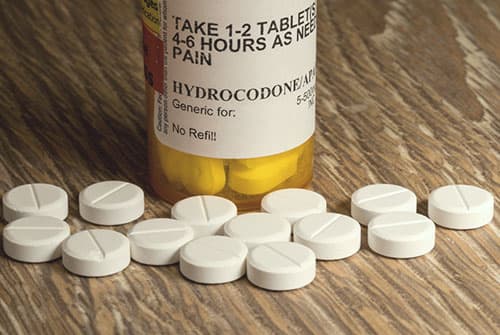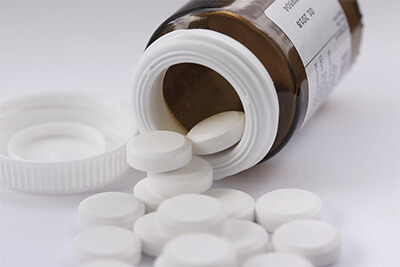Drug Schedules Explained
Origins of the United States Drug Schedules
The federal government established drug schedules in 1970 with the passage of the Controlled Substances Act. This act placed the control of drugs, plants, and other chemicals under federal jurisdiction. The other notable portion of the act was to place drugs in one of five categories or schedules. There were three main criteria as to how the government placed the substances in a schedule, including:
- How dangerous popular medical opinion considered the drugs to be.
- The potential for abuse and addiction.
- If the drug or substance had a legitimate medical use.
Of the five schedules, those in Schedule I are the most restrictive because they have no known medical use.


Creation of the DEA
It wasn’t until 1973, however, that President Richard Nixon created the U.S. Drug Enforcement Agency. Also known as the DEA, the organization was created to combat the growing drug problems in America as well as to assign specific responsibilities for drug enforcement. Before this, several organizations were attempting to assume the rights for drug control.
When President Nixon established the DEA, they operated with 1,470 special agents on a nearly $75 million budget. As of 2014, the agency had more than 9,000 full-time employees with an operating budget of $2 billion.
There are five schedules of drugs according to the DEA.
SCHEDULE I
Schedule I drugs are those that have the greatest potential for abuse. They are also drugs that scientists do not currently recognize as having a medical use.
Drugs currently on the schedule I list include:
•Heroin
•Lysergic acid diethylamide (LSD)
•Marijuana
•3, 4-methylenedioxymethamphetamine (ecstasy)
•Methaqualone
•Peyote
Growing Evidence of Medical Uses of Marijuana
You’ll notice there is a drug that may be surprising for some people that it is still a Schedule I drug – marijuana. Some states have approved the use of marijuana for medical and recreational uses, however, marijuana continues to be a Schedule I drug. According to an article in the American Journal of Bioethics, some medical trials have shown there is some therapeutic potential in marijuana. The journal points to studies such as how marijuana can be highly effective in treating pain, such as HIV-related nerve pain as well as cancer pain. Some people also use marijuana as a means to stimulate appetite and prevent nausea related to cancer and cancer treatments.
Is Heroin a Pain Killer?
Heroin is used in some other parts of the world as a pain medication. For example, in England, a person may receive heroin to control labor pains or to reduce the pain associated with having a heart attack. Doctors may even use heroin to control a child’s pain because the drug can be given nasally. However, the drug is given in smaller, more controlled amounts than people who abuse the drug would usually do.
The Opioid Epidemic Shakes Up the Drug Schedules
In 2014, the DEA moved hydrocodone combination products up to a Schedule II category. These drugs were classified as Schedule III before the opioid epidemic. Public health concerns pushed the reclassification.
For example, in 1991, the number of emergency room visits related to hydrocodone use was estimated at 5,089 episodes, according to the American Society of Addiction Medicine. In 2004, the number of admissions for hydrocodone specifically was 46,536. By the year 2011, this number increased to 97,183 occurrences.
In addition to these figures, it was becoming harder to deny that people were dying from opioid addiction. For example, the Centers for Disease Control and Prevention estimated that 16,651 deaths in the United States in 2010 were due to the use of opioids, which included drugs like hydrocodone, oxycodone, and methadone.
Restrictions on Hydrocodone Prescriptions
Hydrocodone was more dangerous to the American public. Restricting the medication changed who could prescribe hydrocodone-containing products. For example, mid-level medical providers aren’t permitted to prescribe Schedule II drugs in every state. Mid-level medical providers include nurse midwives, physician’s assistants, and nurse practitioners. However, some states grant special licenses to these individuals to allow them to prescribe such medications.
Also, medications under Schedule II can only be dispensed for a 30-day supply or less.
While it’s use was steadily increasing during the 2000s, heroin use has been decreasing since 2016. In 2015, approximately 828,000 people over the age of 12 had used heroin. In 2016, this number grew to 948,000.3 It decreased in 2017 to approximately 886,000 users and dropped to 808,000 people in 2019.
Schedule II drugs are those that have a high potential for abuse and dependence. The DEA considers these drugs dangerous, yet also recognizes they have some medical use as well.
•Adderall
•Combination products that have less than 15 milligrams of hydrocodone per dosage ( Vicodin)
•Cocaine
•Dexedrine
•Fentanyl
•Hydeomorphone (Dilaudid)
•Meperidine (Demerol)
•Methamphetamine
•Oxycodone (OxyContin)
•Ritalin
Schedule III drugs are those that have moderate to low potential for physical and psychological dependence, especially when compared with drugs in Schedules I and II.
Examples of drugs on Schedule III include:
•Buprenorphine (Suboxone)
•Products with less than 90 milligrams of codeine per dosage unit (such as Tylenol with codeine)
•Ketamine
•Anabolic steroids
•Testosterone
Schedule V drugs are those that have a lower potential for abuse than all the previous schedules. However, drugs on this schedule still contain a small amount of narcotics. Most of the medications on this schedule include those that are used to stop coughing, relieve pain, or reduce the incidence of diarrhea.
Examples of Schedule V drugs include:
•Cough syrups with less than 200 milligrams of codeine
•Cough syrups with less than 200 milligrams of codeine per 100 milliliters (e.g. Robitussin AC)
•Lomotil
•Lyrica
•Motofen
•Parepectolin
Adding or Removing from the Drug Schedules
There have been new and “designer” drugs on the market since the government established drug schedules in 1970. Three different categories of groups can petition to have a drug added to a schedule, moved, or taken off the schedule entirely. These include:
- The DEA
- The Department of Health and Human Services
- Any interested party, which includes the drug manufacturer, medical society, pharmacy association, public interest group, state agency, local agency, or an individual citizen.
Factors Used to Update the Drug Schedules
To have a drug move or appear on the schedule, the DEA considers eight specific factors:
•The drug’s actual or potential for abuse
•The scientific evidence of the drug’s effect on the body
•The current state of scientific knowledge about the drug
•The drug’s history and patterns of abuse
•The length of time, significance of, and scope of abuse
•What risks there are to public health
•The mental or physical dependence potential
•If the substance is a precursor of a substance that’s already on the schedule list
Rescheduling a drug can be a complex process. Experts and the general public are invited to comment over a certain time about the impacts changing a drug’s schedule may have on the health and well-being of the general public. Moving a drug up the schedule will typically make it less prescribed and available while also potentially promoting its sale on the illegal market.
Ideally, drugs higher on the schedule will be harder to obtain and reduce the illegal use of drugs. However, it’s important to note that this may not always be the case. That’s why the DEA has to carefully consider their actions before adding a drug to the schedule or moving it up or down.
HUNDREDS OF MEDICATIONS ARE ON THE CONTROLLED SUBSTANCES ACT
The U.S. Food and Drug Administration has currently approved thousands of medications for prescription in the United States. An estimated 250 of these medications appear on the Controlled Substances Act schedules. According to the American Society of Addiction Medicine, an estimated 20 percent are misused or abused enough to represent a significant threat to public health.
Drug schedules will continue to assign severity and medical usefulness to prescription medication
Resources
https://fas.org/sgp/crs/misc/R43749.pdf
https://www.dea.gov/drug-scheduling
https://www.ncbi.nlm.nih.gov/pmc/articles/PMC4849133/
https://www.dea.gov/controlled-substances-act
https://www.asam.org/resources/publications/magazine/read/article/2015/04/10/rescheduling-hydrocodone-combination-products-addressing-the-abuse-of-america-s-favorite-opioid
https://www.deadiversion.usdoj.gov/drug_chem_info/benzo.pdf

